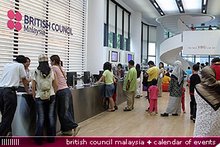Have you ever wondered what headwords were? Not the ones you find in a dictionary, but in the context of graded readers…
How is the proficiency level determined for graded readers?“Graded readers are partly graded through vocabulary, and vocabulary level is identified by the use of headwords. Following the carefully designed grading guidelines, headwords are words within a level-appropriate list available to authors or adapters to use freely. Students at the appropriate level can be expected to be familiar with these words.” (from Oxford University Press FAQ)
There is a computer program called RANGE that categorises all the words in the text in order to determine the distribution of their frequency at given levels of English.
“The RANGE programme was developed by Paul Nation and Alex Heatley of Victoria University, Wellington. It can apply three distinct word lists, called Base Lists, to any text, and can sort the text vocabulary into three categories of headwords from each list, and a category of words outside all three lists, making four categories altogether. Headwords are defined here as the chief words in each word family, or group of words, coming from the same root, through not necessarily the same part of speech. RANGE can do this either by range across several texts, or by frequency within a text. It can also mark each word according to the category in which it falls. The Base Lists can be altered depending on requirements. The ones which come with the programme are the first and second thousand words from West's General Service List (West, 1953), referred to from now on as the GSL, and Averil Coxhead's Academic Word List, referred to as the AWL. “ (an excerpt from a paper which discusses the authenticity of graded readers)
You can find advice and suggestions on using readers in the classroom from OneStopEnglish here: http://www.onestopenglish.com/section.asp?docid=146513
Sunday, August 12, 2007
Headwords – not just for dictionaries
Posted by
ummahzy
at
8:35 AM
0
comments
![]()
Subscribe to:
Comments (Atom)



